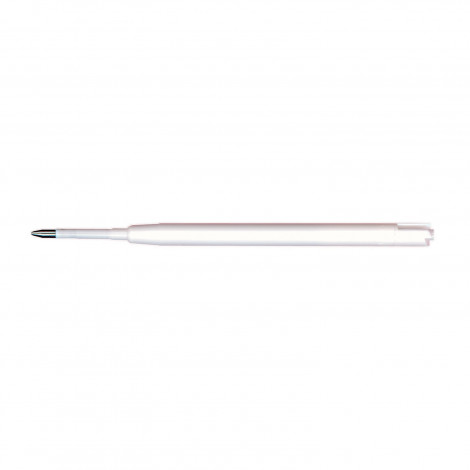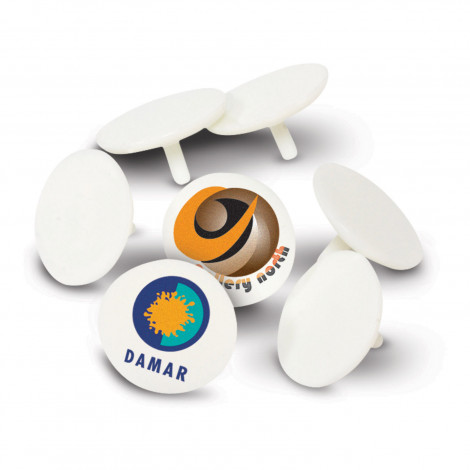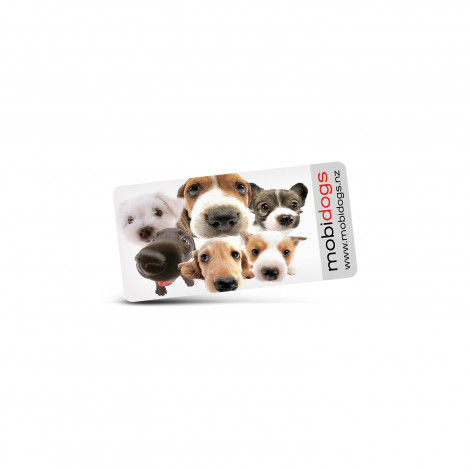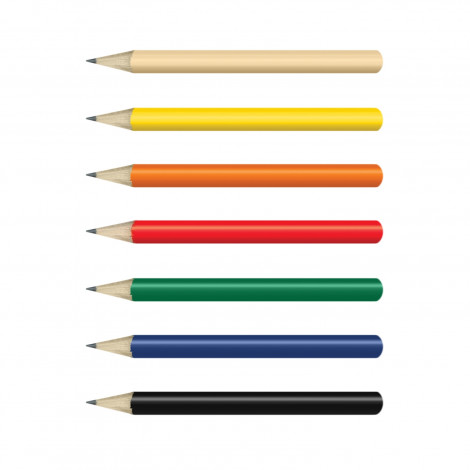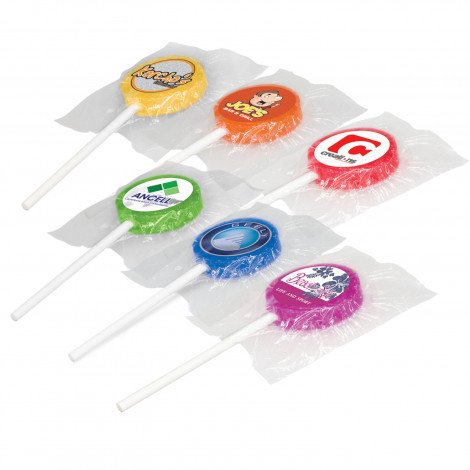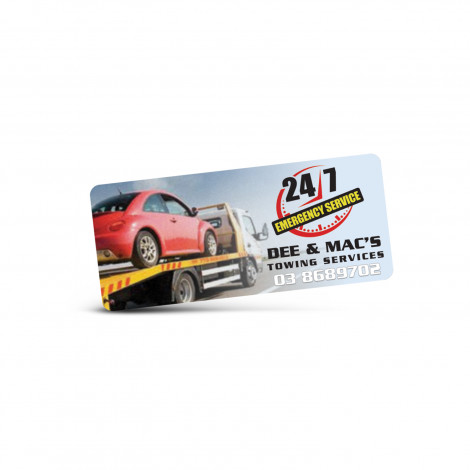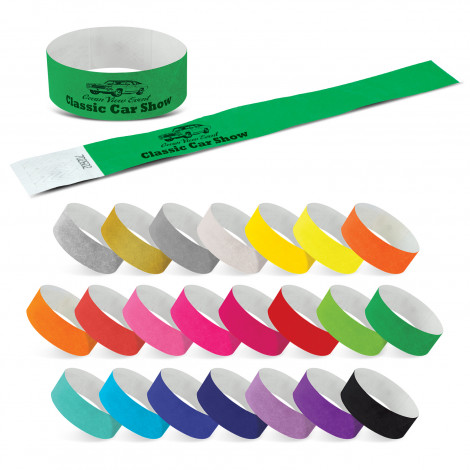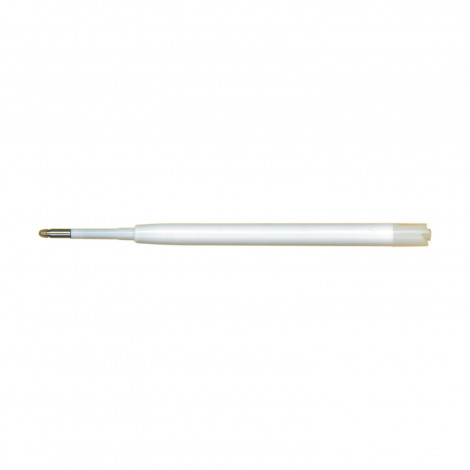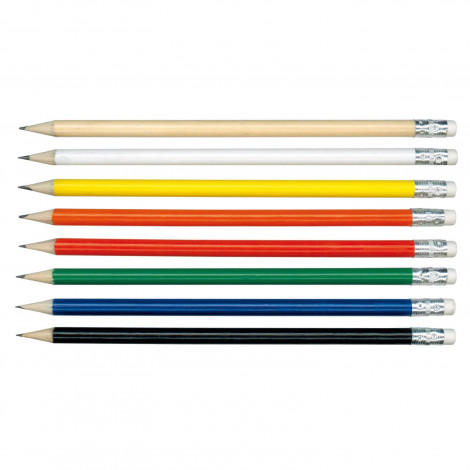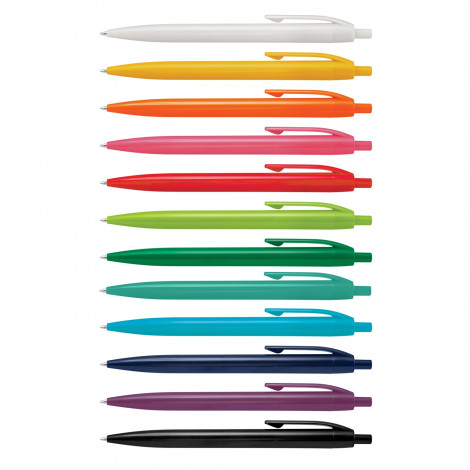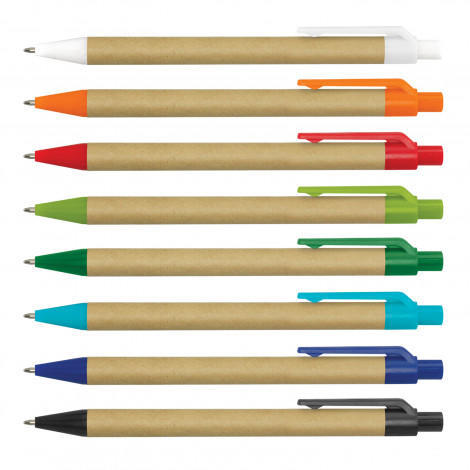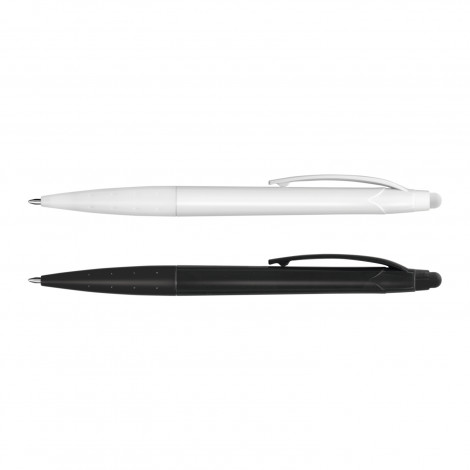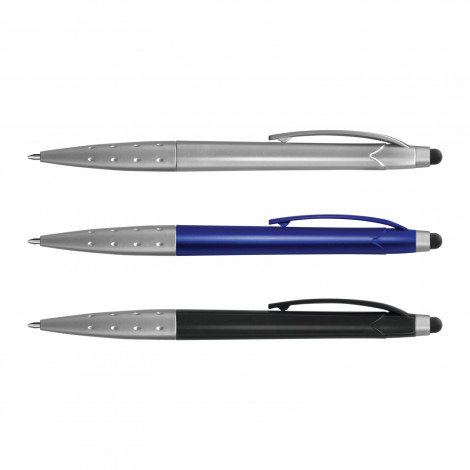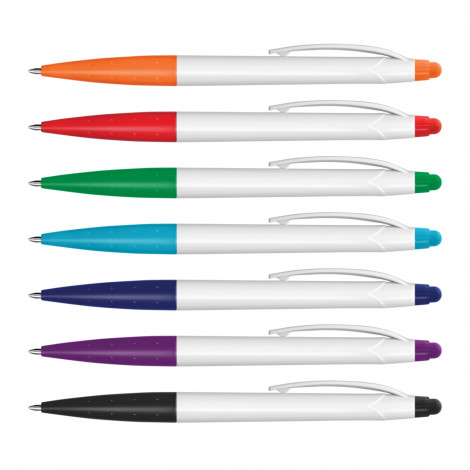How to Align Your Promotional Products with Your Brand Identity
.jpg)
Key takeaway:
- Aligning promotional products with brand identity is crucial for effective marketing. It helps create a consistent and recognizable brand image, enhances brand perception, and increases brand loyalty.
- Conducting a brand audit is essential to understand your brand identity and ensure consistency. This involves assessing brand consistency, evaluating customer perception, analyzing brand messaging, and reviewing brand visuals.
- When selecting promotional products, consider factors such as relevance, quality, usefulness, and alignment with brand identity. Customizing promotional products with brand elements further reinforces brand identity and enhances their impact.

Photo Credits: Highqualitypromo.Com.Au by Alan Allen
When it comes to promotional products, aligning them with your brand identity is crucial. Join me on this promotional journey as we discover the importance of this alignment and the purpose behind it. Brace yourself for insights, as we explore how strategically chosen promotional products can enhance brand recognition, customer loyalty, and ultimately drive business success. Buckle up and get ready to uncover the power of brand-aligned promotional products in your marketing arsenal!
Importance of aligning promotional products with brand identity
Aligning promotional products with brand identity is key for businesses. It guarantees that the promotional items accurately illustrate and communicate the company's values, character, and image. This consistency helps to build trust and recognition among customers, making them more likely to engage and remember the brand.
Promotional products, when aligned with brand identity, become strong tools for marketing. They reinforce the company's message and boost brand awareness among consumers. For example, when a customer receives a promotional product reflecting the brand's values and aesthetics, it forms a positive connection in their mind. This connection can lead to increased loyalty and repeat business.
Businesses need to do a brand audit to assess their current brand identity. This includes looking at components such as consistency in messaging, visual elements, and customer perception. Once the brand's identity is clear, businesses can figure out their objectives and strategies for using promotional products effectively.
Choosing the right promotional products is vital in advertising brand identity. Factors such as usefulness, relevance to target audience, and quality should be taken into account. By selecting items that resonate with the brand's image and messaging, businesses can make a lasting impression on customers.
Designing and customizing promotional products adds an extra layer of accuracy in aligning with brand identity. Customization options allow businesses to incorporate their unique branding elements into the design of the items. This helps to create a consistent visual representation across all marketing platforms.
Implementing and distributing promotional products wisely is essential for gaining maximum impact. Careful selection of distribution channels ensures the target audience receives these products. By targeting recipients correctly, businesses raise their chances of creating a positive impression and generating potential leads.
Monitoring the impact of promotional products is important for assessing their effectiveness in alignment with brand identity. Metrics such as customer feedback, sales data, and brand recognition can be used to measure the success of promotional campaigns. Based on results, businesses can make changes to their strategies and approaches, ensuring continuous improvement in brand identity alignment.
Purpose of the article
The purpose of this article is to explore the importance of aligning promotional products with brand identity. Promotional products are key in marketing strategies. Therefore, businesses must make sure these products accurately reflect their brand's identity. Understanding and implementing brand identity in promotional campaigns can boost marketing efforts and strengthen overall branding.
Brand identity includes unique characteristics, values, and visual elements that set a brand apart from competitors. It also includes the brand's personality, mission, vision, and positioning in the market. Brand identity is the foundation for all marketing activities, influencing how customers perceive and interact with the brand.
Building a strong brand identity involves various components. These include logo, color palette, typography, slogan/tagline, brand voice, and key messages. All components contribute to the brand's image and messaging.
To ensure promotional products align with a brand's identity, a thorough brand audit is necessary. This audit assesses the consistency of the brand across different platforms and evaluates customer perception of the brand. Additionally, it analyzes messaging used in promotional materials and reviews visual aspects like logo usage and design.
Once a brand identity is understood, defining promotional objectives aligns with the brand's goals and values. Developing strategies to achieve these objectives captures attention and reinforces the desired image for the brand.
When selecting promotional products, factors such as target audience preferences, practicality of use, alignment with brand values, and relevance to promotions must be taken into account. Matching promotional products with the unique elements of a company's brand identity ensures consistent messaging across all marketing channels.
Designing and customizing promotional products reinforce brand identity. Attention to detail in design is essential for creating a visually appealing and memorable representation of the brand. Customization options such as imprinting logos, using specific colors, and incorporating brand elements into product design create a more personalized and cohesive approach.
Implementing and distributing promotional products requires strategies tailored to each campaign. Identifying the best channels to reach the target audience guarantees that promotional efforts are effective. Additionally, targeting recipients with personalized messaging increases promotional product campaigns' overall effectiveness.
Monitoring and evaluating the impact of promotional products is important to measure success and make adjustments. Metrics such as customer feedback, sales data, and brand recognition levels help companies gauge the effectiveness of their campaigns. Evaluation results enable companies to refine their strategies and better align with their brand identity for continued success.
Understanding Your Brand Identity

Photo Credits: Highqualitypromo.Com.Au by James Jones
Understanding your brand identity is the key to aligning your promotional products effectively. In this section, we'll dive into the definition of brand identity, the importance of brand identity in marketing, and the components that make up your brand identity.
By exploring these aspects, you'll gain valuable insights into how to craft promotional products that authentically reflect and reinforce your brand's unique identity. So, let's uncover the secrets to creating promotional products that truly resonate with your target audience.
Definition of brand identity
Brand identity is a special set of visible, verbal, and experiential elements. It stands out from its rivals. In marketing, brand identity is vital. It helps position the brand in the market and explains how customers view and interact with it.
Brand identity has several components. These include: the brand name, logo, tagline, color scheme, typography, and other visuals. Additionally, brand identity incorporates the brand's characteristics, values, mission statement, and unique selling point (USP). Together, these elements form a unified and consistent depiction of the brand which appeals to its target market.
A strong and well-defined brand identity builds trust and reliability with consumers. It sets the brand apart from rivals by creating a sense of familiarity and recognition. When used with promotional products, brand identity can boost marketing efforts. It reinforces key messages and values and leaves a lasting impression.
Without a strong brand identity, marketing is like trying to sell a car with no engine - it won't get far.
Importance of brand identity in marketing
Brand identity is vital for marketing. It gives a company or product a strong, recognizable image. It showcases unique characteristics, values, and personality to make it distinct from the competition. By staying true to this identity, companies can form trust with their target audience.
To successfully market a product or service, it is important to have a powerful brand identity that resonates with the target market. This creates awareness and recognition, making it easier for people to connect with the brand. It also sets the tone for marketing efforts, guiding the messaging, design, and strategy.
Components of brand identity include mission statement, logo, tagline, color palette, typography, and visual style. These work together to create a memorable brand image. Consistency across all marketing materials helps reinforce the identity and leave a strong impression.
By aligning promotional products with the brand identity, companies can strengthen their messaging and boost their marketing efforts. Promotional products become tangible representations of the brand, and when they are in line with the brand's values and visual style, they reinforce the connection between the consumer and the brand.
Components of brand identity
Brand identity involves various components that contribute to forming a brand's unique image and positioning. These elements affect customers' perception and make the brand stand out from its rivals. Consequently, comprehending and applying these components correctly is important for effective marketing.
Visuals are a major part of brand identity. This includes logos, colors, typography, and overall design. These visuals help create quick recognition and association with the brand, making it attractive and memorable.
Brand messaging is also essential. It involves the tone, language, and style used in communication with customers. Consistency in messaging helps build trust and credibility.
Brand values and personality are also vital aspects. A strong set of values allows customers to identify with the brand. A distinct personality helps humanize the brand. Having these traits in place helps increase customer loyalty and preference.
Customer experiences also shape brand identity. How customers perceive their interactions with the brand affects their opinion. Positive experiences lead to greater trust and advocacy. Negative experiences, however, can damage the brand's reputation.
In conclusion, brand identity consists of visual elements, messaging consistency, value system and personality traits, as well as customer experiences. Each component is important when creating how customers perceive and connect with a brand. Companies must consider these components carefully when developing their products to align with their brand identity.
Conducting a Brand Audit

Photo Credits: Highqualitypromo.Com.Au by Raymond Garcia
Conducting a brand audit is the first step in aligning your promotional products with your brand identity. Discover the purpose behind a brand audit and learn about the essential steps involved in this insightful process. Get ready to dive deep, evaluate, and strategize your brand's values, messaging, and presence to ensure your promotional products effectively reflect and enhance your unique brand identity.
Purpose of a brand audit
Brand audits are the sidekicks of businesses, helping them evaluate their branding efforts and assess how their desired brand identity is being communicated and perceived. It's a crucial tool to identify any discrepancies between the intended image and how customers perceive it. By conducting surveys or focus groups, companies can gain valuable insights into what aspects of their branding are successful and which may need improvement.
For a successful audit, involve multiple stakeholders from across the organization. This collaborative approach allows companies to get a comprehensive view of how the brand is portrayed at every touchpoint, to help ensure all aspects of the brand are in line with the business' objectives.
Steps involved in conducting a brand audit
Conducting a brand audit? Here's a five-step guide:
- Assess Brand Consistency. Check all marketing materials like websites, social media profiles, ads, and packaging. Ensure consistency in visuals, tone, and messaging.
- Evaluate Customer Perception. Ask customers for feedback. Analyze their responses to pinpoint areas for improvement.
- Analyze Brand Messaging. Look at all written content associated with your brand. Make sure it reflects your brand values and speaks to your target audience.
- Review Brand Visuals. Examine logos, colors, fonts, and imagery. Make sure they showcase your brand personality and set you apart from competitors.
- Identify Gaps and Opportunities. Uncover any inconsistencies or weaknesses in your branding. Leverage unique aspects of your business to strengthen your branding.
Brand audits can help organizations spot gaps and align with their brand identity. When assessing brand consistency, think of it as seeing if your brand is dressed well - no plaid, sequins, and polka dots!
Assessing brand consistency
Consistency is vital for branding. It makes it simpler for customers to recognize and remember your brand. This consistency builds trust, reinforcing the relationship between your brand and its target audience.
To assess brand consistency, you need to look at elements like your logo, colors, typeface, voice, and imagery. Review these elements across print materials, digital platforms, and social media accounts. Check for any inconsistencies or deviations from the desired brand image.
Evaluate how your customer experiences align with your branding. See if the customer perception fits the values and attributes you want for your brand.
Analyze your consistency to identify areas for improvement. This can include updating visual elements or refining messaging to better reflect your desired identity.
By examining how customers view your brand, you gain valuable insights. Make adjustments before they spit coffee all over their keyboards!
Evaluating customer perception
Understand customer perception? Important! Evaluation, through surveys, interviews, focus groups - these help. Gauge customers' thoughts on key aspects: brand rep, product quality, satisfaction. Identifying gaps, between brand identity and customer perception, crucial. Compare intended and actual perceptions, identify discrepancies. Address gaps, refine brand messaging, communication strategy. Understand customer perception, businesses refine brand messaging. Resonate more with the target audience. Communicate values, unique selling points, create a stronger connection.
Evaluating customer perception? Need reliable research methods. Gather data from a representative sample of customers. Comprehensive understanding of how segments perceive the brand. Continuously evaluate customer perception, make adjustments. Strengthen alignment between promotional products and brand identity. Maximum impact!
Analyzing brand messaging
Conducting a comprehensive analysis of brand messaging requires considering several factors. Check how well the chosen messages align with the brand's identity and positioning. Ensure the messages accurately reflect the brand's personality, values, and intended market.
Evaluate the effectiveness of various marketing channels, such as ads, social media, website content, and PR. Examine how well the channels convey the messages and if they engage the target audience.
Understand customers' perception. Do surveys, focus groups, or analyze customer feedback and reviews.
Review competitors' messaging strategies too. Identify unique selling propositions and differentiators that allow the brand to stand out from the competition in terms of messaging.
Finally, take a close look at your brand visuals - the good, the bad, and the logo-ly.
Reviewing brand visuals
To review the success of visuals, it's key to analyze various elements. Creating a table that evaluates consistency and customer perception is one way. Messaging through visual representation is also important. Evaluate if visuals match the desired identity.
In addition, analyze if visuals reflect core values and personality traits. Identify any gaps or inconsistencies. See if visuals differentiate from competitors or are similar.
To improve visuals: ensure consistency across channels. Enhance unique features that set the brand apart. Refresh or update existing visuals to stay current.
By reviewing and making thoughtful changes, promotional products can be better aligned with the brand's identity. This enhances recognition and communication of values. Harmonizing visuals with products boosts marketing efforts for increased success.
Defining Your Promotional Objectives and Strategies

Photo Credits: Highqualitypromo.Com.Au by Michael Allen
When it comes to aligning your promotional products with your brand identity, it's crucial to start by defining your promotional objectives and strategies. In this section, we'll explore the key elements to consider when identifying your promotional objectives, developing effective strategies, and ultimately aligning these objectives with your brand identity. From reaching target audiences to boosting brand recognition, we'll dive into the essential tasks that will set the stage for a successful promotional campaign. So, let's unveil the secrets behind establishing your promotional foundation and driving your brand towards success.
Identifying promotional objectives
To identify promotional objectives, assess your brand consistency. How well do your current promotions align with your brand identity? Make adjustments to ensure a consistent message.
Gather customer feedback and conduct surveys. Understand their perception and tailor your objectives to address any gaps.
Analyze brand messaging. Does it reflect your core values and unique selling propositions? Ensure language resonates with your target audience.
Review brand visuals. Assess elements used in previous promotions and determine if they represent your brand identity. Consider color schemes, typography, and imagery.
By following these steps, identify specific objectives to promote your brand. These may include increasing awareness, generating leads, enhancing loyalty, or launching new products/services.
Developing promotional strategies
Developing effective promotional strategies is key for success in today's competitive business landscape. It requires deep understanding of brand identity and its importance in marketing. Conduct a brand audit to assess brand consistency and evaluate customer perception. Analyze brand messaging and review visuals. Make sure objectives align with identity. Selecting the right promotional products is crucial. Consider quality, relevance and target audience. Product design should capture attention and convey the message. Incorporate brand elements to reinforce identity. Distribute and target recipients strategically. Monitor and evaluate effectiveness. Analyze metrics like sales growth, customer engagement and brand awareness. Adjustments can be made to optimize future strategies. Don't miss out on the opportunity to create a strong brand image through well-planned promotional activities that resonate with your target audience.
Aligning promotional objectives with brand identity
For synchronizing promotional objectives with brand identity, it is important to be aware of what your brand identity stands for. This identity includes the core elements of your brand, like mission, personality, values, and visual aesthetics. With an understanding of these components, you can make sure your promotional objectives match your brand.
Doing a brand audit is a must for aligning promotional objectives with brand identity. This requires assessing the consistency of your branding across different touchpoints and understanding how customers view your brand. This audit assists in identifying gaps or discrepancies between your message and customer perception, so you can adjust your promotional objectives.
After comprehending your brand identity and completing the brand audit, begin setting up specific promotional objectives that go with it. These objectives should be designed to communicate key parts of your brand's identity through promotional products or activities. Whether expressing luxury or promoting sustainability, each objective should reflect your brand's values and characteristics.
When selecting the right promotional products or activities, think about how well they go with your brand's identity. Quality, design aesthetic, functionality, and relevance to your target audience are important when making sure alignment between promotional efforts and brand image. By selecting products that your target audience resonates with, and accurately represents your brand's features, you can strongly communicate your message through your campaign.
Design is significant for aligning promotional products with brand identity. Make sure the design of your promotional products has your key brand elements - logos, colors, and typography - in a unified and attractive way. This helps with brand recognition and creates a consistent visual identity across all promotional materials.
Lastly, monitor and evaluate the impact of your promotional products. This lets you make changes based on the results. So, your promotional activities stay in line with your brand's identity even after implementation. By tracking metrics such as customer engagement, sales conversions, and brand awareness, you can gain insights into the effectiveness of your promotional efforts and make wise decisions for future campaigns.
Selecting the Right Promotional Products

Photo Credits: Highqualitypromo.Com.Au by Steven Jackson
When it comes to aligning your brand identity and promotional products, the key lies in selecting the right ones. It's not just about slapping your logo on any item. In this section, we'll explore the importance of this decision and the factors to consider when choosing promotional products. We'll also discover how to effectively match these products with your unique brand identity, ensuring a cohesive and impactful marketing strategy. So, let's dive in and uncover the secrets to selecting the perfect promotional products for your business!
Importance of selecting the right promotional products
Choosing the perfect promotional products is essential for successful branding. Careful consideration should be given to ensure that the items accurately portray the company's values, personality, and message. This creates a unified image in the minds of customers.
In order to select such items, it is important to understand the components of brand identity. These elements include the logo, colors, typography, taglines, and visual aesthetics. The selected items should clearly reflect these elements to effectively communicate what sets the brand apart.
Moreover, the right promotional products have a direct impact on customer perception. Customers form opinions based on their interactions with the materials. By choosing items that align with the brand identity and values, businesses can shape customer perceptions positively. This helps in building trust and establishing a strong connection.
Furthermore, selecting appropriate promotional products creates consistency across all marketing efforts. This reinforces brand recognition and recall among customers, as they encounter consistent branding elements across various touchpoints.
Considering these factors while selecting promotional products helps businesses create a memorable impression. It enables them to stand out from competitors by showcasing their unique style through customized items that bear their branding elements.
To sum up, selecting the right promotional products is imperative for effective marketing strategies. It helps businesses accurately represent their values, create a positive customer perception, and achieve consistency across all marketing touchpoints.
Factors to consider when selecting promotional products
When picking promotional products, there are a few factors to think about. They are very significant in making certain the promotional products fit with the brand identity and effectively pass on the wanted message to the desired audience.
- Knowing the recipients: It's essential to take into account the people receiving the promotional products. Knowing their tastes, needs, and demographics can help choose products that will be appreciated. This makes sure the promotional products will have a greater chance of making a long-lasting impression.
- Budget: The next factor is the budget accessible for promotional activities. It is significant to get a balance between cost and quality when selecting promotional products. Even though it is tempting to go for cheaper options, it is important to ensure they still represent the brand's image and don't look cheap or low-quality.
- Practicality: Practicality is something to think about. Promotional products that are useful are more likely to be kept by recipients and used in their everyday lives. This will boost brand exposure and help people remember it.
- Relevancy: It's important to consider the relevancy of the promotional product to the brand's sector or line of work. The product should fit what the brand stands for and should match its values and offerings. This stops any confusion between the product and brand identity.
- Strength and longevity: Furthermore, strength and longevity should also be taken into account. The chosen promotional products should be able to survive regular use without worsening in quality or losing their usefulness over time. Products that last longer will give the brand extended exposure.
- Customization: Finally, it's crucial to make sure the chosen promotional product can easily accommodate customization or branding elements. The product should enable effective positioning of logos, slogans, or any other visual representation of the brand identity. This helps in strengthening brand recognition and recall.
Making sure these factors are considered when selecting promotional products allows for a strategic and tailored approach. This maximizes the effect of promotional campaigns while staying true to the brand identity. By evaluating the intended recipients, budget, practicality, relevancy, durability, and customization options, brands can make sure their promotional products become successful ambassadors for their identity.
Matching promotional products with brand identity
Selecting promotional products needs thought.
- Pick items that match the target market. E.g. a tech company might choose USB drives.
- Reflect the brand's personality and values. If sustainability is important, eco-friendly products are a great choice. Practicality and usefulness also count.
Customization options can help link the product to the brand. Logo, colors, slogans, and taglines can be added to the design. This makes the brand experience cohesive and boosts recognition.
Designing and Customizing Promotional Products

Photo Credits: Highqualitypromo.Com.Au by Adam Young
Designing and customizing promotional products is a crucial aspect of aligning them with your brand identity. In this section, we will explore the importance of design in promotional products, delve into the various customization options available, and discuss how to incorporate your brand elements seamlessly into the design. So, get ready to discover how to make your promotional products stand out and leave a lasting impression on your target audience.
Importance of design in promotional products
Design is key for promotional products. Visual and aesthetic appeal can influence customers' views of a brand. Per "1. Introduction," brand identity relies on design.
A great design not only catches attention, but also expresses the brand's message. As discussed in "6. Designing and Customizing Promotional Products," a bad design could miss the mark, missing a chance for recognition. Investing in a good design is vital for the most impact.
Design also allows customization and incorporation of brand elements - logos, colors, fonts, and images. These elements are highlighted in "6.3 Incorporating brand elements in promotional product design." By adding them to the design, a company can reinforce their brand image and create a consistent marketing campaign.
"5.1 Importance of selecting the right promotional products" explains that picking the right products is just as important as designing them. The correct products combined with an excellent design will reach the target audience and meet objectives.
Don't be basic - customize your promotional products and be branded!
Customization options for promotional products
Logo customisation is a great option for promotional products to increase brand recognition. Colour matching the products with the brand's visual identity adds consistency.
Personalise the messaging with your customers on promotional products for a more intimate connection. Incorporate unique artwork or illustrations to showcase your brand's creativity and story.
Choose materials to reinforce brand values, like using eco-friendly materials to demonstrate sustainability.
Modify product shapes to match the brand's logo or theme for a strong visual connection.
It's important to consider cost-effectiveness, production feasibility, practicality when choosing custom features. Remember to balance uniqueness and relevance when customising promotional products. Consistency in your brand identity is key, while making sure the customisation resonates with your target audience.
Incorporating brand elements in promotional product design
Let's demonstrate the importance of adding brand elements to promotional product design. Here's an example table:
| Promotional Product | Brand Element Incorporated |
|---|---|
| Custom T-shirt | Company logo |
| Branded pens | Tagline |
| Engraved keychains | Brand colours |
Adding brand elements to promotional products helps create a visual link between the item and the overall brand. This helps people recognize and remember the company.
Before including brand elements in promotional product design, consider the target audience. Understand their preferences and values, so the design matches their expectations. For instance, if the target group is young, choose modern and trendy designs.
Implementing and distributing promotional products is important. Make sure the giveaways get to the right people, not the bottom of a junk drawer!
Implementing and Distributing Promotional Products

Photo Credits: Highqualitypromo.Com.Au by Billy Young
Implementing and distributing promotional products play a crucial role in aligning your brand identity. In this section, we'll dive into strategies that will help you effectively implement your promotional products, explore various channels for distributing them, and discover how to target recipients on a deeper level. From choosing the right products to reaching your desired audience, this section provides valuable insights that will elevate your promotional efforts.
Let's explore the key methods for optimizing the impact of your brand through promotional products!
Strategies for implementing promotional products
- Identify your target audience - be sure to understand their values, preferences and needs. This will help you select the most fitting promotional products.
- Create a cohesive brand experience - ensure consistency in design, messaging and visuals to reinforce your brand identity.
- Choose the right distribution channels - consider geographical location, customer demographics and business type to target your market.
- Personalize and customize - add a unique touch with recipient names and personalized messages.
- Measure and evaluate - continuously monitor and evaluate the impact of promotional products. Analyze customer engagement, brand recognition and sales conversions to make data-driven adjustments.
Channels for distributing promotional products
Online platforms provide an efficient and cost-effective approach for distributing promotional products. Websites, social media, and email marketing let businesses showcase and sell to a global audience. Retail outlets offer customers to interact directly with the products. Placing merchandise in retail outlets can help create brand recognition and drive sales. Distribution partnerships with businesses or organizations having similar target audiences can leverage existing networks to distribute merchandise.
It is important to look into each distribution channel's unique details. For example, using product placement methods in movies/TV shows can reach a wider audience and increase brand awareness. Identifying the channels that match customer's target market and effectively distribute promotional products is key.
Targeting recipients deeply with promotional products
To successfully target customers with promo products, companies need to do a complete brand audit. Assess brand consistency, customer perception, brand messaging, and visuals. This helps understand the brand identity and image. Align promo strategies with values and attributes that resonate with the target audience. Promo products must capture attention and evoke positive emotions about the brand. When selecting promo products, consider relevance, usefulness, quality, and cost-effectiveness. The products must reflect the company's personality and positioning. For example, a tech company may choose branded USB drives or wireless chargers, while an eco-friendly company may opt for reusable water bottles or organic cotton tote bags. Matching these with brand identity creates a cohesive message, reinforcing customer loyalty and improving brand recognition. Design plays a vital role in promoting brand identity through promo products. Use logos, colors, fonts, slogans, and align with brand aesthetic. Customization options like engraving or printing messages on the products adds impact by personalizing them. To distribute promo products, plan and consider strategies and channels. Companies can distribute at trade shows or events, or send directly through mail or packages. Choose the right channel to reach recipients at the right time and context, to maximize the effectiveness of the promo efforts. Monitor and evaluate the impact of the promo products to determine success. Metrics like response rates, customer feedback, and sales data provide valuable insights. Regularly review these metrics and use the findings to refine promo strategies and improve future campaigns.Monitoring and Evaluating the Impact of Promotional Products

Photo Credits: Highqualitypromo.Com.Au by Richard Ramirez
Monitoring and evaluating the impact of promotional products is key for aligning them with your brand identity. Discover the importance of assessing promotional product effectiveness and how to measure impact using relevant metrics. Learn how to make data-driven adjustments based on evaluation results, ensuring your promotional products are delivering maximum value and driving desired outcomes for your business. Don't miss out on optimizing your promotional efforts and securing a strong brand presence with well-monitored and evaluated strategies.
Importance of monitoring and evaluating promotional products
Monitoring and evaluating promotional products is essential for businesses. It helps them assess the impact these products have on their target audience. Also, it allows them to measure the success of their marketing campaigns. Companies can use metrics such as customer feedback, website traffic, and sales data. This information is necessary for refining their promotional strategies and allocating resources accordingly.
Moreover, businesses can use monitoring and evaluating to find potential challenges. They can analyze customer reactions, preferences, and behaviors towards promotional products. This allows them to identify trends or issues that may hinder their branding efforts. Thus, they can pivot or adjust their strategies, to ensure they remain aligned with their brand identity and resonate with customers.
In summary, monitoring and evaluating promotional products is vital in driving successful brand promotion for businesses.
Metrics to measure the impact of promotional products
Identify relevant metrics to measure the impact of promotional products. These help assess success and achieve objectives. Analyze key indicators to make data-driven decisions.
Check out these metrics:
- Return on Investment: Profitability of promotional activities.
- Conversion Rate: Percentage of recipients taking desired action.
- Brand Awareness: Recognition and familiarity with the brand.
- Customer Satisfaction: Perception and satisfaction levels.
- Sales Revenue: Increase in sales due to promotions.
Unique measurements such as social media engagement, website traffic or surveys can also be used to assess product impact.
Pro Tip: Select metrics that fit promotional objectives and brand identity. Consistently collect data for evaluation and comparison.
Make adjustments: Monitor, evaluate and adapt strategies when needed.
Making adjustments based on evaluation results
Analyze evaluation results for guidance on promotional product adjustments. By studying the influence of these products, brands make savvy decisions to modify and upgrade. Align these changes with their brand identity.
- Step 1: Analyze Evaluation Results. Examine the data collected while monitoring. Discover designs, trends, and areas for improvement. Look at metrics such as customer reception, brand constancy, and the effect of promotional products on brand identity.
- Step 2: Pinpoint Opportunities for Improvement. After analyzing the data, pinpoint spots to refine promotional objectives, redefining audiences, and upgrading design and customization of promotional items.
- Step 3: Implement Adjustments and Measure Impact. Put in place the changes. Refine messaging, source different promotional products, and modify distribution channels. Monitor and assess the updated promotional strategy. Measure success and make more adjustments if needed.
Evaluation results are paramount for maintaining brand identity. Follow a structured process: analyze data, identify possible improvements, and implement changes. This way, brands can refine their promotional efforts and boost their brand presence.
Conclusion

Photo Credits: Highqualitypromo.Com.Au by Adam Wright
Promo products are key for connecting with a brand's identity. Choosing items that represent the brand's values helps companies boost their image and build a solid brand presence. The selection of promotional products should mirror the brand identity and target market to ensure they click with both. Doing this helps businesses effectively spread their brand message and create a stronger bond with their customers.
The first step towards aligning promotional products with a brand's identity is to figure out the core values. This calls for scrutinizing the brand's mission, vision, and messaging. This helps businesses find themes and attributes, and select items that match the brand identity. For instance, a tech firm that focuses on innovation and sustainability may pick eco-friendly promo products, like recycled USB drives or solar-powered chargers.
Another factor to consider is the target audience. Knowing the target audience's characteristics and preferences is key to choosing promo items that will be well-received. For example, a sports apparel firm targeting athletes might go for promo products like water bottles, sports towels, and performance gear. Selecting items that fit the target market increases the chances of creating a positive brand connection.
It is also essential to keep all promotional materials consistent. All design, colors, messaging, and tone should line up with the brand identity. This unity helps form a strong brand image and enhances brand recognition. By maintaining a consistent visual identity, companies can strengthen their identity and make a lasting impression on their customers.
In summary, connecting promo products to a brand's identity is essential for creating a unified brand image. Knowing the brand's values, targeting the right market, and being consistent are all essential for getting the message across and forming a distinct brand presence. Investing in the right promo products helps firms elevate their identity and build a meaningful connection with their customers.
Some Facts About How to Align Your Promotional Products with Your Brand Identity:
- ✅ A strong brand identity involves more than just a logo or website; it includes various elements such as color scheme, employees, office building, culture, products, and services. (Source: Team Research)
- ✅ Promotional products can be used to reflect and reinforce a brand's identity and remind customers of what the business represents. (Source: Team Research)
- ✅ When choosing promotional products, it is important to consider quality, utility, and relevance to ensure they effectively align with the brand identity. (Source: Team Research)
- ✅ Design ideas for branded merchandise are limitless and can have a positive impact on company awareness and sales efforts. (Source: Team Research)
- ✅ The Love to Brand team, with their 10 years of experience in the promotional merchandise industry, can provide ideas and support for businesses of any size. (Source: Team Research)
FAQs about How To Align Your Promotional Products With Your Brand Identity
How can I align my promotional products with my brand identity?
Aligning your promotional products with your brand identity involves considering your branding guidelines, color palettes, and tone of voice. It is important to select products that reflect the values and image of your company. For example, you can choose products with your company logo, branded mugs, branded clothing, or other items that fit within your brand's style.
What should I consider when selecting promotional products?
When selecting promotional products, it is important to consider factors such as the perceived value of the item, its relevance to your target audience, and its utility for the customer. You should also ensure that the products align with your brand's message and are of high quality. Cheap giveaways may be perceived negatively, so it's important to choose items that create a positive brand association.
How can I create a positive brand association with my promotional products?
To create a positive brand association with your promotional products, focus on selecting desirable and high-quality items. It's important to choose products that catch people's eye and align with your brand's image and values. Additionally, consider offering branded merchandise that is relevant and useful to your target audience, as this will help leave a lasting impression and build positive associations with your brand.
What are some examples of powerful branding tools for promotional items?
Powerful branding tools for promotional items can include products such as custom printed promotional products, branded merchandise, and corporate gifts. These items serve as physical representations of your brand in the real world and can help reinforce your brand identity. Examples of powerful branding tools can include branded folders, promotional mugs, reusable coffee cups, custom printed notebooks, and eco-friendly sports bottles.
How can I ensure that my promotional products align with my company's desired brand image?
To ensure that your promotional products align with your company's desired brand image, it's important to follow proven branding rules. These rules include understanding your recipients deeply, developing an intentional identity and style for your branded merchandise, keeping designs simple and consistent, and staying true to your company's message and values. By adhering to these rules, you can create promotional products that effectively communicate your desired brand image.
Where can I find an experienced supplier of promotional products?
If you are looking for an experienced supplier of promotional products, you can contact Love to Brand. With over 10 years of experience in the promotional merchandise industry, their team can provide ideas, support, and a wide range of products for businesses of any size. They can offer guidance on selecting the right promotional items to align with your brand identity and help you create a professional image for your company.

